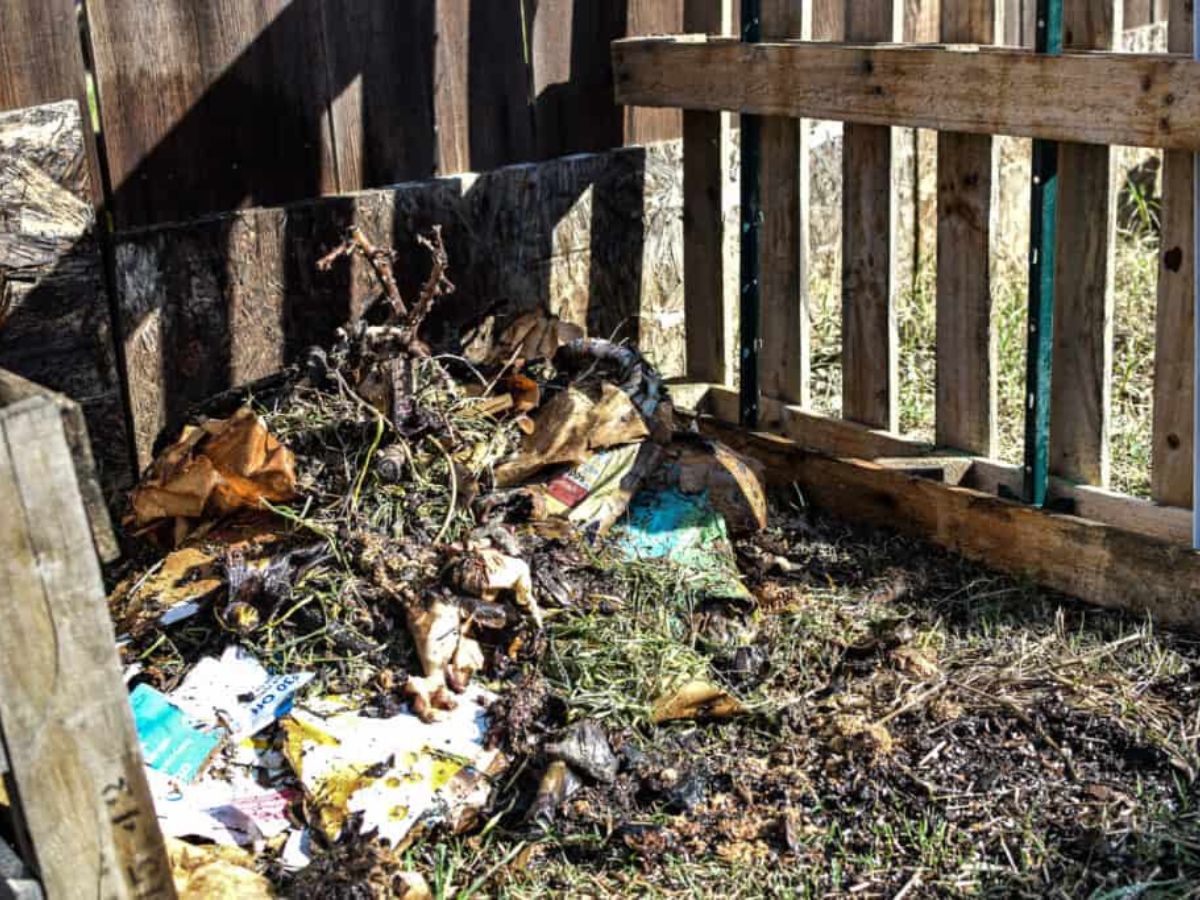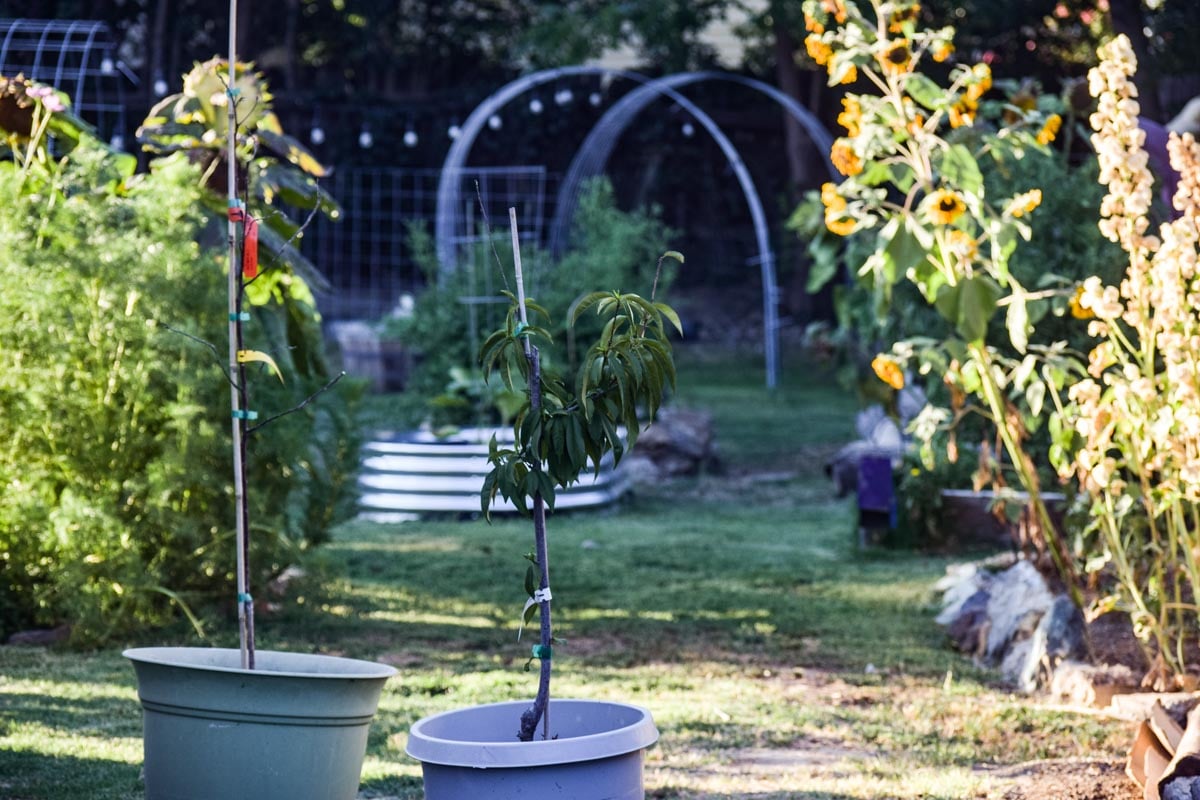How to Make Compost | Garden Compost
This a simple guide that will show you how to make compost for your garden and explains what exactly it is.

If you have gardened for any length of time then you more than likely have come across compost in one way or another. You may have even purchased and used some of this wonderful stuff in your plantings. But what if I told you that the same bags you lug out to your car on your weekend home depot trips can be made from the same garbage your throwing away at home, for FREE?

It is true! Once you see this small miracle happen you will wonder why everyone doesn’t have one. Making your own compost will result in a healthier more abundant garden. It will save you money. If you have children, this is also a wonderful lesson to teach them as well. You are not only saving money but you are reducing the waste coming out of your household while ensuring a healthy abundant garden.
What is Compost?
But let’s not jump too far ahead here, I want to make sure to explain to those who are reading this that maybe don’t know what it is or why they need it for their gardens.
Compost is a soil amendment full of nutrients perfect for growing plants and veggies. In its basic form, it is a naturally broken-down mixture of nitrogen and carbon sources. Now that sounds a bit scientific and complicated so before I scare you away from this idea, let me explain what these two elements are.
Nitrogen
Nitrogen comes from things like:
- grass clippings
- chicken manure (minus the straw or sawdust, that is carbon)
- coffee grounds
- food scraps (everything but meat and dairy products)
- weed clippings
- plants still green at the end of their life pulled from the garden or house plant clippings
Carbon
Now carbon, on the other hand is:
- crispy fall leaf piles
- cardboard
- cereal boxes (which use soy ink so they are just fine to use)
- newspaper
- brown paper bags
- toilet paper and paper towel rolls
- shredded mail
- chicken bedding like straw or sawdust
- dried up end of the season plants

When composting, you want to make sure that you add things that can be broken down so no plastic or glass should be thrown in. Think organic items. Especially because you are likely using these to grow food and you don’t want chemicals in the dirt you use to grow it.
Containers for Composting
There is a wide array of containers you can purchase for composting but being the Dave Ramsey meets the minimalist style of thinking that I have these days, I ain’t about to waste buying the fancy stuff.
I use a typical rubber made trash can that I drilled several holes in at the bottom for air flow.


Directly on the bottom and around the bottom of the container. Whenever we have any compostable items, which we do almost daily; we take them out to the bin right outside my kitchen door and toss it in.
It took a little getting used too for both me and my daughter. But now she and I know, we don’t throw it away unless it’s plastic or isn’t compostable.
If you use my method for composting you will want to make sure to break down larger pieces. Things like cardboard from all those amazon purchases should be broken down.
I make sure to tear those up into about 6-inch or so pieces to help the process. Kids find this part fun, so if you’re looking for little ways the kids in your house can help out. This is a good one.

Another method we are actually utilizing this year is creating a wood pallet compost. I have taken wood pallets and secured them with t-posts from the hardware store to create a walled-in area for the compost.
To keep the heat in, I have placed it in a sunny area. I will need to water and turn this pile about once a week in order for it to remain moist. You do not want your pile drying out. If you use this method instead of a container method, be sure to not throw tons of food scraps in this pile as that can create a food source for pests.
Getting Your Compost Pile Started
Now that you have a container or the pallet method to store your compost. You will want to have equal amounts of nitrogen items and carbon items to make sure this is a balanced pile.
Think half of one and half of the other. It doesn’t have to be an exact measurement but if you see it’s mostly cardboard boxes, add some of those grass clippings in.

I also pour a bit of water inside from time to time because you want your pile to be as moist as a wrung-out sponge. It is a good idea to stir it around with a pitchfork or shovel maybe once a month. This will ensure it doesn’t get completely dried out and everything continues to break down effectively.
If you are not sure you would like to have an actual compost pile in your backyard or you don’t have the space. Believe it or not, there are other ways to compost. This Bokashi Composting Method is a great one to do for small spaces. It works amazingly well at composting kitchen scraps that are ready to use within weeks.
What Happens Next
Now the same rules apply here as it does gardening because the last ingredient will be your patience. Composting takes anywhere from 3 months to over a year to break down.
It all depends on the size, what’s in the pile, and how well you have balanced everything.
Your job is really just to wait. While letting those amazing microorganisms and worms do their jobs of breaking it all down for you. You will know it’s ready when you will a slightly sweet-smelling, dark crumble like in the picture.
From here you can add this directly into your garden beds. I find that my compost tends to break down quickest near the bottom of the pile. You can simply scoop up the black dirt and place it directly into your garden beds.
Trouble Shooting
Composting isn’t always perfect on the first go around. Especially when you first begin. Many times we do things like neglect the pile, not water it enough, or water too much. All will cause the pile to breakdown much slower. Here are some issues that might arise and what to do if they happen.
Bugs in Compost Pile: It is perfectly normal to see bugs like rollie pollies, worms, and even the occasional black beetle crawling around a pile. These insects help to breakdown the elements within the compost pile. However, if you have cockroaches, or ant hills forming or other unpleasant pests in your pile there are a few reasons this may have happened. First, the pile is not hot enough. This can be because you either don’t have enough nitrogen or enough carbon so the pile is out of balance. Second, the pile is dry. Cockroaches like dry places with food sources.
A dry compost pile that is not balanced can be a perfect place for these insects to live. So instead of creating a comfortable living space for them be sure to balance your pile. This can be done by adding either adding more nitrogen or carbon as needed. You will also want to ensure the pile is moist throughout and it will work quicker if in a sunny location. Before leaving the pile, be sure to thoroughly water the pile to make sure the contents throughout are moist.
Bad Smells: A compost pile should not have a bad smell coming from it. If this happens the pile is most likely out of balance. If you find you are throwing large amounts of food scraps into the pile but not types of carbon, the pile will rot causing it to smell bad. Please see the list of good carbons listed above for what a good carbon addition consists of.

Final Note
Making compost for your garden is a wonderful way to reduce household waste and help feed your garden at almost no cost. The no-cost part of that should have any gardener excited these days. As who is not looking to save money? Ensuring your compost pile is moist throughout, balanced with nitrogen and carbon, and stirred once a month with a pitchfork or shovel. You will be well on your way to having this dark rich nutrient dense compost to feed your garden.
Truly a magical process.
Happy gardening to you!

Shop For Later
Rubbermaid Trash Can with Lid 32 Gallon
Pin For Later

Check Out More Favorites From The Farmhouse!
It is the Second Season in the Garden
Backyard Chickens for Beginners
*Disclaimer: This post may contain affiliate links, which means I may receive commissions if you choose to purchase through links I provide (at no cost to you).


![The Garden Walk [Keeping The Weeds at Bay]](https://aquaintlife.com/wp-content/uploads/2020/02/the-garden-walk-1.jpg)



